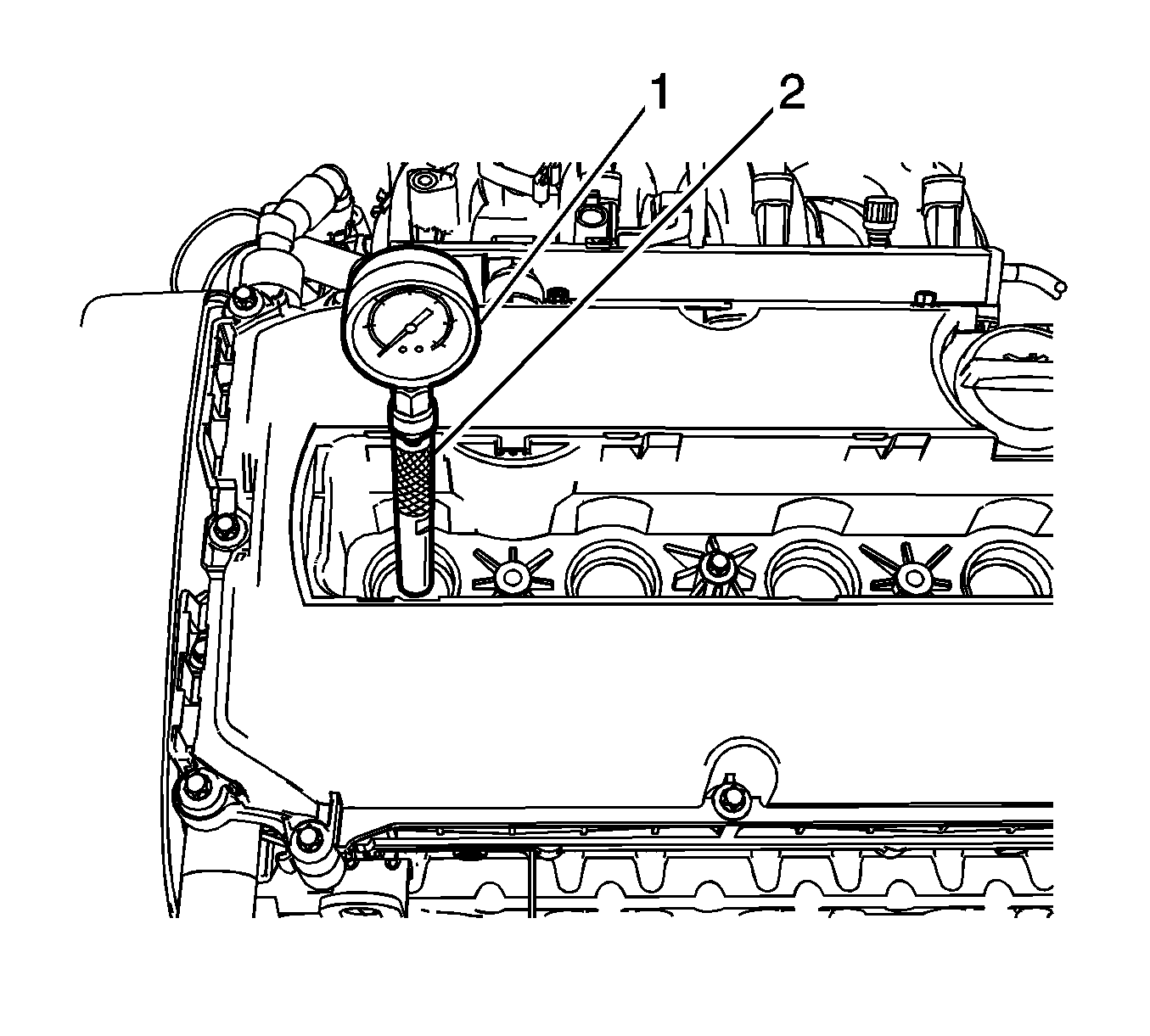Special Tools
| • | EN-49077 Compression Pressure Gage |
Note: Test the compression pressure for each cylinder. The following conditions should be considered when you check the cylinder compression.
| • | The engine should be at normal operating temperature. |
| • | The battery must be at or near full charge. |
| • | The throttle valve shoud be held fully open. |
| • | The engine cranking time for compression test should be less than 5 seconds at interval of 30 seconds. |
- Remove the fuel pump relay from the engine room fuse box.
- Remove the spark plugs.

- Install EN-49077 (1) and EN-49076 (2) in the spark plug hole for the cylinder that is being checked.
- Crank the engine for less than 5 seconds at an interval of at least 30 seconds. Engine revs at least 300 RPM.
- Read the compression pressure gage.
- Repeat the above procedure in the rest cylinders.
- Compare the all cylinder values.
Specifications
| • | Normal pressure 900 kPa (130.5 psi). |
| • | Maximum pressure differential 90 kPa (13.0 psi). |
- Examine the gage readings obtained after the four "puffs" per cylinder are obtained from cranking the starter motor.
The readings are explained in the following descriptions:
| • | Normal Condition: Compression builds up quickly and evenly to the specified compression on each cylinder. |
| • | Piston Rings Faulty: Compression is low on the first stroke and tends to build up on following strokes, but the compression pressure does not reach normal. The compression pressure improves considerably with the addition of oil into the cylinder. |
| • | Valves Faulty: Low compression pressure on the first stroke. The compression pressure does not tend to build up on the following strokes. The compression pressure does not improve much with the addition of oil into the cylinder. |

